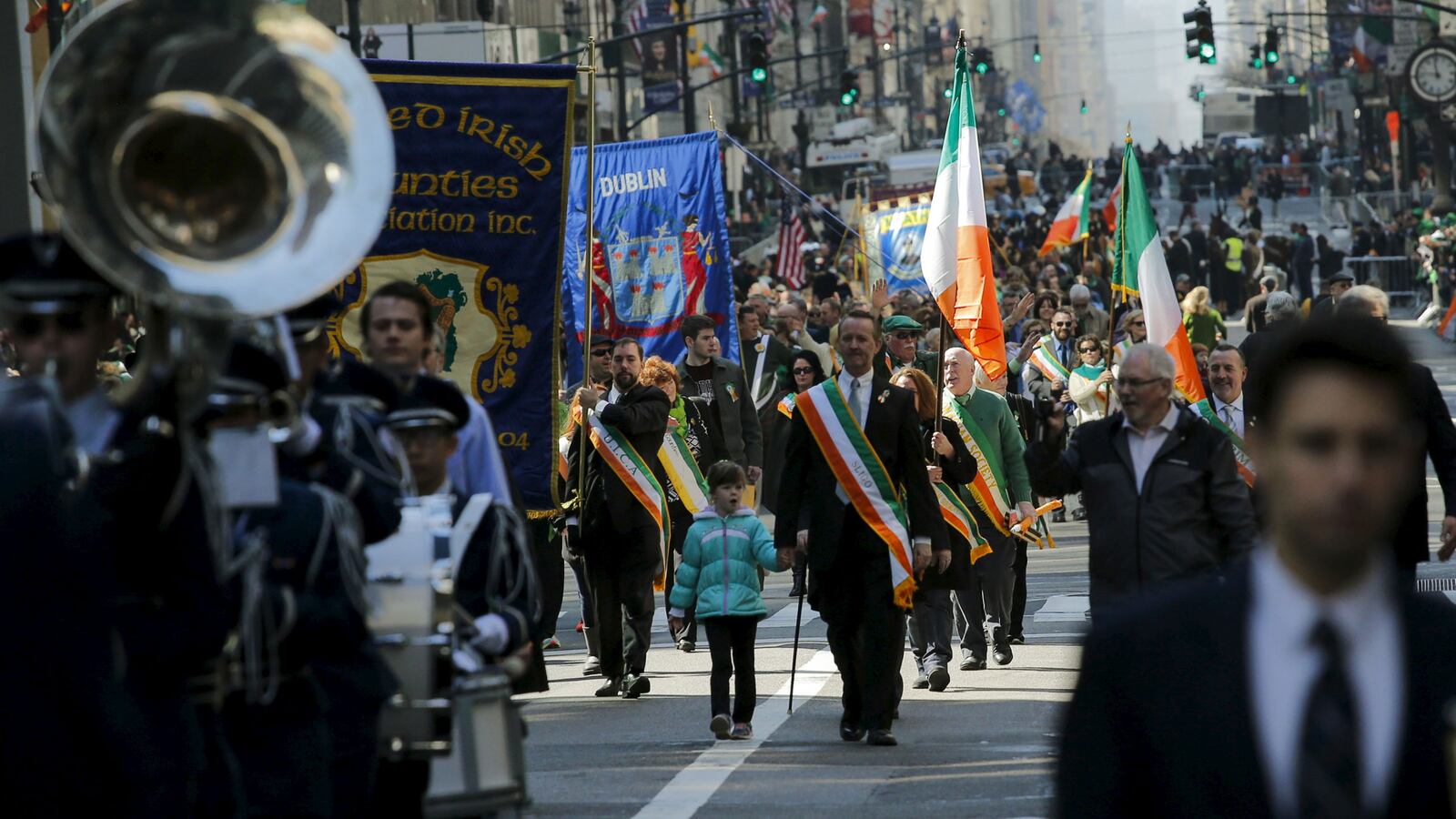I remember once reading a blurb for J.P. Donleavy’s 1955 novel The Ginger Man—the author’s first—that commended it by saying this was the book that your boozy sister would love.
This made me wonder if your abstemious sister would also dig it. That novel told the tale of Sebastian Dangerfield, a rakehell of an American ex-pat up to various forms of lascivious and licentious gamboling in Dublin, which made a certain amount of congruous autobiographical sense. Donleavy was born in Brooklyn and went to school at Trinity College. The novel, which will split your nerves and tendons from where they are supposed to be fastened, is hilarious. And, like any good comic novel, it’s also deeply sobering. Guts of life and all that jazz.
Donleavy gets lumped in strange categories. He doesn’t get comfortably lumped in with the Irish stalwarts like Joyce, Beckett, Yeats, and attempts to place him with the Kitchen Sink realists of the late ’50s and early ’60s always feels forced. There are not a lot of picaresque realists, but there aren’t a lot of better novels for St. Patrick’s Day than Donleavy’s 1973 effort, A Fairy Tale of New York. It is the book of his that is better than The Ginger Man, a shillelagh to the head that both gives your soul a buzz worthy of a holiday of day drinking, and knocks it sober in fierce epiphany the next morning.
In some ways, you can’t get a simpler holiday, in terms of how it’s enacted and carried forth, than St. Patrick’s Day. There’s not a ton of awareness of anything St. Patrick did these days, nor much point in expostulating a drunken bro when he intones between mega-gulps of Bud Lite that no, there were no snakes in Ireland for our man Pat to drive out. What people want on the holiday is booze and to drape themselves in Irish flags and colors. The SJWs who standardly blate about cultural appropriation are too busy mouthing bottles to realize the irony. And, of course, the Irish don’t care, being a sporting and inclusive people, largely, who get a kick out of people wanting in on their culture. Come for the stout, maybe find your way into a Synge play or two.
I reread A Fairy Tale of New York every year starting around Ash Wednesday, generally wrapping up on March 17. In this case, we have the story of a man, Cornelius Christian, who is a native New Yorker returning to New York from Ireland, where he had lived and gotten married, and now he is stepping off an ocean liner to declare a horrible piece of baggage at customs: the body of his dead wife.
OK, I know what you’re wondering: in what universe could that drive me to drink green beer? The ancient fermenters of beer believed that it was a brew to unlock your mind. Sounded good in the PR literature at the time, anyway. An account of a man toting his dead wife to his old country is bound to prompt both the unlocking of a mind in the sense that you try to imagine what that would feel like, and also in the concomitant need for spirits. As it were, Christian was taking his wife to his home. We never know if they meant to settle there, or if it was a visit so she could see his places and his people. Instead, Christian, who has little money, now has a funeral to pay for, no job, and no place to stay. A cabbie takes him to a lousy room where he’s accosted by his landlady who thinks he’s a pervert because he’s toting woman’s clothes around, and in the course of doing the grim business he has to do, he enters the orbit of a funeral home director named Clarance (with two A’s) Vine.
Donleavy the writer had a sort of dual literary citizenship. This can be useful. It can also be confusing. Is this an Irish writer—and we tend to look on those a certain way, as always being in a tradition, no matter how vanguard they might be—or an American one?
But I think moving from group to group and region to region, is useful for a gifted writer. There’s never any shackling. The onus is on invention; that is the port city. If people want to say you’re in this costume now, that costume later, that’s fine, and you’re simply an artist of many robes. Most writers just don the one ineffectual cape and cowl. But what’s really cool about A Fairy Tale of New York that way is that it mirrors the inclusivity of St. Patrick’s Day. It’s Irish and it’s American, and that means it’s also everything in between, trimmed with sundries and mannerisms and that blend of the rogue spirit and the perceptive mind—that deeply soulful mind—of the Irish sage.
Vine is one of the great characters in post-1950 literature. He is a beautiful man. When Christian first meets him, and Vine speaks of the mortician’s art, providing comfort in death, stating that death is but a phase in a journey, a transition, he can’t help wondering what it looks like when Vine, who is also a widower—but with two girls—orgasms.
All of these years later, I sit at the Starbucks, I read that line, I snort out a bit of coffee, and my eyes scan behind the counter to the barista I am somewhat in love with who speaks of the healing powers of yoga as though she were in religious fervor, and I think the same thing. It’s the St. Patrick’s Day date we have that maybe I’ll someday tell her about. When a writer can make you think along these lines in your world, having gifted you a portion of their characters’ worlds, then they are a’cookin’.
Vine is fastidious with the light settings and other appurtenances of the rooms of his multi-chambered funeral parlor. “Sorrow demands a perfect temperature,” he informs Cornelius Christian, and what can you say to that, if you’ve experienced the death of a loved one and become super-sensitized to every last particular of your environment, but yeah, yeah it does.
I know of no other book that employs the style of this one. First and third person mix. Donleavy will change from one to the other within a paragraph, and back again, like Christian’s thoughts are being marshalled by a bigger version of Christian who has final authorial say, with third person pulling rank—after all, it’s the omniscient voice—on first person. Each chapter ends with a line that might as well have been lifted from a broken haiku by a broken person who wants to die but hasn’t stopped wanting to live. Which, you may know, is one big ass distinction.
To mirror that clash-up, there is irregular capitalization, which makes for a jagged typographical ridgeline. The craggy, sharp, uneven, piercing rocks of life. “Happiness Is a big cat With a mouse On a square mile Of linoleum.” For instance. “When you find A friend Who is good and true Fuck him Before He fucks You.” “In all The dark rooms Where courage Must live If life Is not To die.”
Aphoristic, cryptic, poetry of a single shaft of light finding its way into a room of darkness with an emphasis—in part because of the capitalizations—on prepositions, which ground us in time and place—that is to say, anchored in the corporeal world—and a verb like “is,” which is the very verb of existence.
Cornelius gets hired by Vine to be a “front of the house” man—a grief assuaging greeter—eventually having a brief, one-body run as an undertaker himself before he tells a woman to go fuck herself after she complains that he made her dead husband look like a tart. He boozes and screws, but he boozes and screws with infinite sadness, his orgasms akin to the voiding of bowels before death. St. Patrick’s Day is the winter’s last hurrah holiday. We’ve stayed in more than we do at other times of the year. Christmas, which was barely in winter anyway, buoyed us for a bit, but then we become entrenched. You wait for what is tantamount to a seasonal sunrise, if you live in northern parts of this country, which are your bigger St. Patrick’s Day centers. You can still get snow dumped on you in mid-March, the run of freezing temps isn’t over, but St. Patrick’s Day is the reminder that, lo, here is the ray of sun in the otherwise dark room. Come out, come out wherever you are.
Christian spends a lot of time alone, walking. A woman smiles at him at a crosswalk, then smiles again on the other side of the road. He gets up the nerve to ask her for a drink, looking for some moments of human connection, and instead at a restaurant is provided with her rates for a blowjob.
Life is like that sometimes, isn’t it? You want to bridge the impasse that sometimes feels like it’s on all sides of all of us, to touch someone and be touched by them, as lightly as finger to finger—but emotionally—and the best there is going to be is oral sex, without so much as joint farewells.
I think, more and more, in the internet age of disconnection, we live that metaphor. On St. Patrick’s Day, whether we know it or not, we are coming together—albeit in a fumbly, boozy way—to celebrate life. Togetherness. That within that group we might find someone, or a few people, we might connect with, now that the light is returning.
One of the biggest tricks to fiction is that you must make people believe that the people who are your characters could be out there. You will never meet anyone like the characters. People tend not to be remotely dynamic, but characters must be, and they still must feel like they move among us.
An itinerant corpulent man with a sandwich board turns up outside of the Vine funeral home, and generally follows Christian around, writing short messages on his sign or sometimes on his ass, and you accept this. It makes sense in this world, though you know that would never happen in your life, but not because, strictly speaking, it couldn’t. Again, a key distinction. What Donleavy knows is something of simple, and yet nearly imponderable, power. People might not be dynamic, usually, but there is something dynamic in how humans can respond to grief. How they can bury the loved one and go back to work in a few days, and somehow make it work. Not because they’ve repressed this pain like so much pain they’ve repressed in their lives. But as if they’ve been lifted in their lives by that third person version of themselves, who helps the first person, ground level version find strength, and through strength, a way. Not consistently, maybe, but enough.
Shane MacGowan would drop the “A” of the title of this Donleavy novel and make “fairy tale” one word for a very famous Pogues song in 1987. He knew what he was doing and why he was doing it. That song, as you probably know, is a Christmas air that goes someplace other Christmas airs do not. It’s a holiday song that goes beyond the holiday, and takes a darkened room, and penetrates it, with a shaft of light. Same deal with A Fairy Tale of New York and St. Patrick’s Day.
Shaft Of light, shaft Of life In an often shafted life, so get mouth Around the pump that Is this novel and drink hearty Me boyos.







